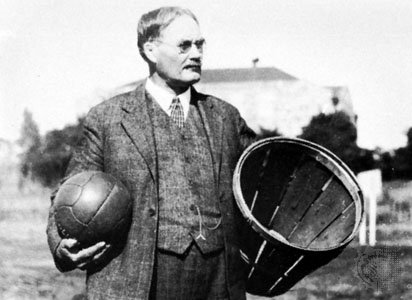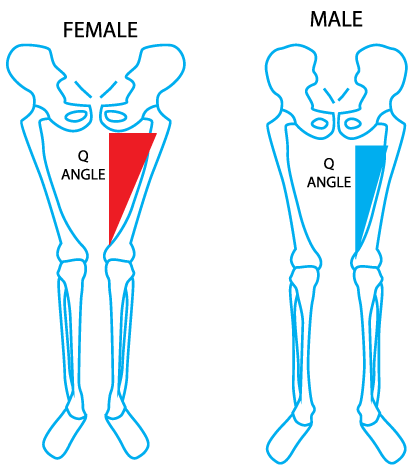
Image taken from: https://www.britannica.com/biography/James-Naismith/images-videos#/media/1/401920/13159
Basketball was first invented in 1891 by a man named James Naismith, who stuck a basket to a pole, and threw a ball into the hoop. The game gained popularity rapidly and has evolved into a sport beloved by many around the world. The people of Singapore are no exception, with courts popping up in all neighbourhoods, where people of all ages gather to compete over a ball and two baskets at opposing ends of the court.
The objective of the game is simple; to get the ball into the hoop, and to score more than the opponent. However, the physical demands of the sport are nothing to be snuffed at. The finesse, agility, and power required to reign over the competition put tremendous amounts of pressure on the muscles and joints. A single jump places a force of 6.9 – 9.0 times your body weight. Moreover, jumping plays only a small role in basketball. All the other acts of slashing and pivoting place significant stress on the body as well. It is no wonder that injuries are a common occurrence amongst basketball players.
A study by Andreoli et al. found that of 12,000 injuries analysed, lower limb injuries constitute the majority of it. Of the lower limb injuries, the ankle and the knee were the most commonly injured, comprising 21.9% and 17.8% of all injuries respectively. These results are unsurprising given that most of the force absorption of basketball players happens through the lower limbs. Ankle injuries were most common in almost all categories of basketball players, regardless of age or gender, with the lateral (outer side) ligaments being the most commonly injured ligaments in the ankle. The only exception was in the Masters’ category where knee injuries were more prevalent.
The high incidence of ankle injuries is a cause of concern as it causes temporary disability with reduction in physical activity. A study by Herzog et al., 2019, shows that a past history of ankle sprain is the single greatest predictor of future ankle sprains, making it 3.5x more likely to sustain a subsequent ankle sprain compared to someone who has never had an ankle sprain before. It has also been known to increase the risk of degenerative joint conditions later on in life. Hence, injury prevention is a very important part of any ankle rehabilitation. A comprehensive injury prevention program consists of balance training, strengthening, as well as ensuring good ankle control through sports specific movements.
In the event when one sustains an ankle injury, the recommended immediate treatment post ankle injury is the RICE regimen – Rest, Ice, Compression, and Elevation. However, recent articles have suggested PRICE instead, with the letter “P” referring to “Protect” as being the first line of intervention. Following the initial injury phase, restoration of movements and strength in the ankle becomes the primary aim of therapy. Dorsiflexion (bending your toes closer to your knee) is often limited post ankle sprain, and it is essential to improve dorsiflexion range to prevent subsequent sprains.
Apart from the ankle, the knee is the second most commonly injured area. Knee injuries are concerning as they can be rather serious, often requiring surgery, and having to take significant time off their sport. The knee is a hinge joint that is designed to bend and extend in the sagittal plane. However, due to the nature of the basketball game, especially during defense, it causes the knee to move in the frontal plane significantly more than with other sports. As the game involves frequent changes in directions, the pivoting movements can cause micro rotations to the knee joint, leading to more damages. Hence, it is no wonder that knee injuries are the second most prevalent in basketball injuries.
Non-contact anterior cruciate ligament (ACL) injuries of the knee are of great concern in basketball, as it occurs at a disproportionately higher rate compared to sports like soccer and volleyball. Female basketball players are six times more likely to sustain an ACL joint injury compared to a male player. This is primarily due to anatomical differences between male and female, with female athletes having a larger Q-angle which translates to greater valgus forces when landing from a jump.

Image taken from: Body Talk with Christye: Shin Splints and How to Fix ‘Em — Human Performance Blog · Volt Athletics
The increased incidence of knee injuries in female athletes are certainly not unique to basketball. In the sport of netball, which requires similar pivoting and short sprint movements, the high occurrence of knee injury has prompted governing bodies to come up with specific warm up routines to prevent knee injuries. An example of it would be the NetballSmart Program created by Netball New Zealand. Such a warm up program has been useful in reducing knee injuries by up to four folds, according to Netball New Zealand. Hopefully, this will prompt similar actions by the governing bodies of basketball so as to educate players on the types of warm-ups that can be done to prevent injuries.
Warm-up is an essential part of any sport, and not just for females. An example of another sport tackling injury prevention would be the FIFA 11+ warm up program. This 20-minute program was created by FIFA, the governing body for soccer, and has been shown to reduce injury rates by up to 50%. Warm-ups are used to prepare the body for the upcoming activity by raising its temperature, increasing blood flow to your muscles, and are shown to even improve sporting performance. Yet, warm-up is most often neglected in recreational basketball. This is most often seen when working adults gather for a game during the weekends. Hence, it is of utmost importance to encourage the sportsmen and sportswomen in your family to perform short dynamic warm-ups before their activities. This can come a long way in preventing injuries, and add more years to playing the sport they love.
Basketball is definitely a sport that places significant amounts of stress on the body given the brisk pace and constant acceleration and deceleration required in the game. It is precisely because of this, that professional athletes spend tremendous amounts of money in toning and honing their bodies to endure the physical demands of the sport. One such basketball superstar reportedly spends 1.5 million USD every year to take care of his body, ensuring his longevity on the basketball court. That, of course, would not be a feasible plan for the common recreational player in Singapore. However, going to the gym to work on strength, running around your block for cardiovascular health, and maintaining flexibility, could go a long way in helping you play your best on the court. If you are unsure of how to proceed in either rehabilitation of an injury, or to recondition yourself to be more confident when playing basketball, please do not hesitate to reach out to our physiotherapy clinic in Singapore who are well placed to point you in the right direction.






